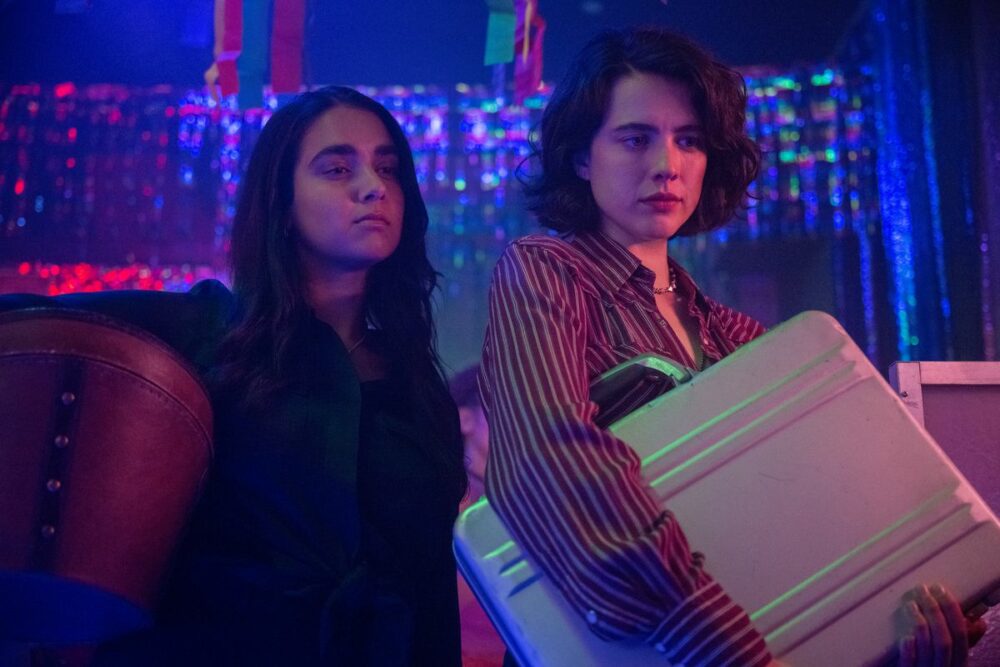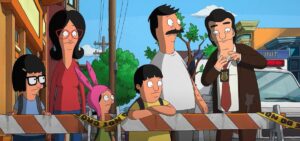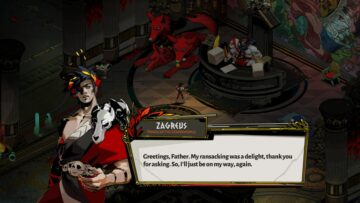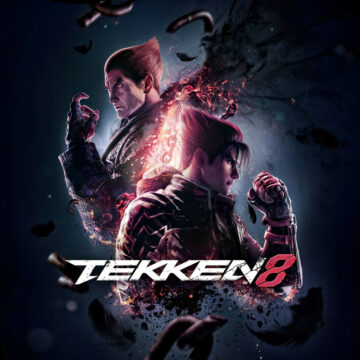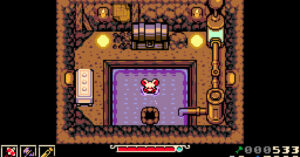The Coen brothers’ filmography is tragically straight. Acclaimed for their stylistic breadth and wit, their films are rich and willing to play with gender roles in ways that welcome queer readings — the screwball hijinks of The Hudsucker Proxy and the winking choreography behind Channing Tatum’s dance numbers in Hail, Caesar! are among the many playful flourishes where the space between quirk and intent are as wide as the viewer wants it to be.
Outright stories for and about theys and gays, though? Not their strong suit. But in Drive-Away Dolls, Ethan Coen peels away from his sibling to make his first solo feature a grand ol’ lesbian romp, trying to cram a few decades of lost time into one outrageous comedy. It doesn’t fully cohere, but it sure is a party.
Directed by Ethan Coen and co-written by Coen and his wife, Tricia Cooke, Drive-Away Dolls is a long-gestating passion project of Cooke’s, a love letter to the (now dwindling) lesbian bar scene of her youth, set at the end of the millennium. The film follows two friends, the unflappably relentless Jamie (Margaret Qualley) and the uptight Marian (Geraldine Viswanathan), on a road trip from Philadelphia to Tallahassee, Florida, stopping at wonderfully named queer haunts along the way. (Think “She Shed” or “The Butter Churn.”) But Jamie and Marian don’t realize they rented a car meant for someone else, carrying cargo that someone very important wants.
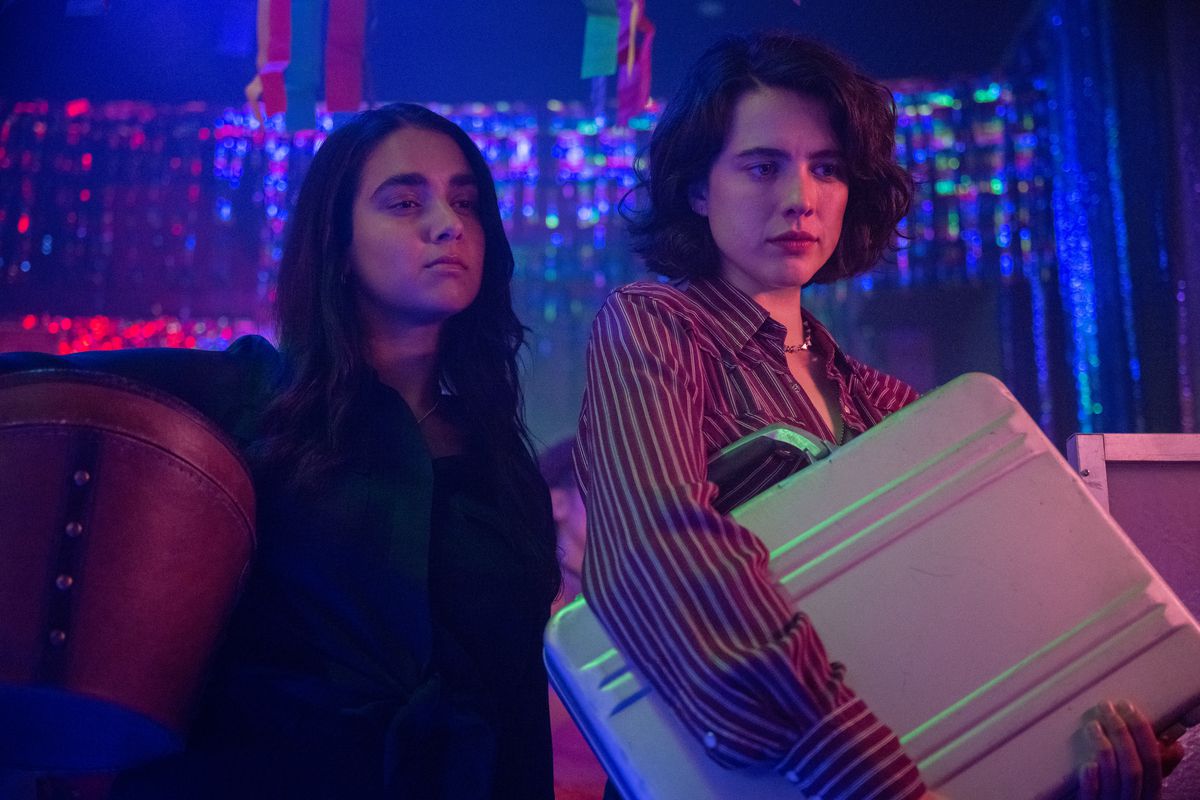
Photo: Wilson Webb/Working Title/Focus Features
That last bit is the familiar streak running through Drive-Away Dolls, the crime caper those familiar with the Coen brothers’ work might be expecting. But in this case, the caper is ensconced in something Cooke describes as “trashier” than Ethan’s collaborations with Joel. Another good way of describing it would be “more reckless.” There’s a thrilling abandon to Drive-Away Dolls that runs counter to the characteristic control the siblings are known for. The jokes are broad, the sex is lewd, the scene transitions are loony, and psychedelic interstitial footage drips in and out for almost no reason at all, until the final one reveals a punchline the audience might have no idea they’re being set up for.
All this excess is tremendous fun, and watching beloved actors like Pedro Pascal, Bill Camp, and Beanie Feldstein crash into Jamie and Marian’s roadtrip is endlessly delightful. As a whole, however, Drive-Away Dolls feels a bit slight. The film doesn’t make tremendous use of its period setting — mostly, the year (1999) is plot fuel, with the lack of smartphones serving as a persistent, plausible reason for the misunderstandings and misdirections behind the film’s caper antics.
Drive-Away Dolls could have easily made more hay out of its period setting, if only to flesh out its two heroes. Qualley and Viswanathan are wonderfully cast as Jamie and Marian, but their dynamic is overly familiar: Free-spirited friend wants to help a prissy pal open up and maybe hook up with a lady for the first time in three years. Also, maybe they’d be happier together? Just kidding! (Unless…)
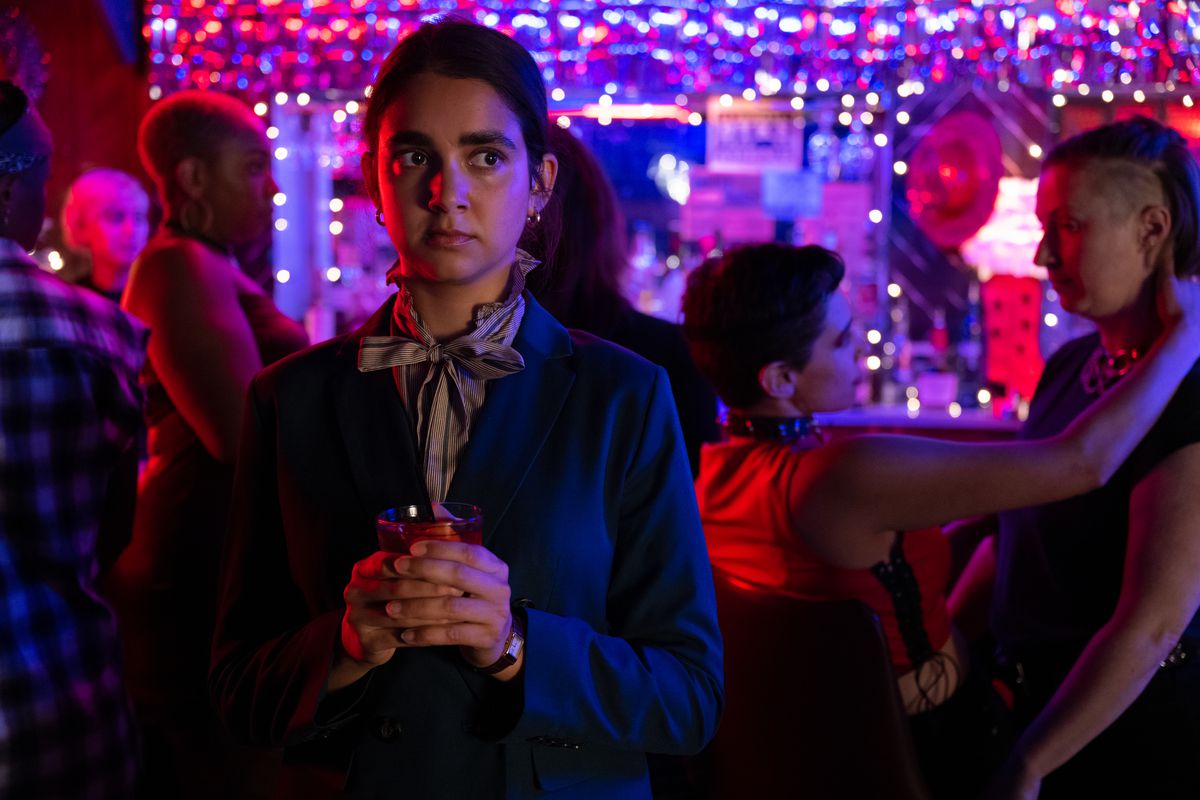
Photo: Wilson Webb/Working Title/Focus Features
Drive-Away Dolls’ well-worn beats are buttressed by tremendous style, a deep care taken with the film’s production and costume design. All that attention to the era that isn’t fully present in the script comes out in the visuals instead. There isn’t much narrative texture to Marian and Jamie’s various stopovers — in particular, there isn’t much for Jamie or Marian to connect with. While the pair have frequent and funny interactions on their trip, the people they meet are more or less cartoon characters setting up a gag.
Similarly, it isn’t particularly clear how Jamie even knows about the bars she wants to stop at. The opportunities for Jamie and Marian to form some kind of connection with the people in the places they go, to let the film live in the reality of how queer people found community in the pre-social-networking era, are scant. This missing texture makes the movie a sugary cocktail with Pop Rocks on the rim, overwhelming flavor with arguably superfluous crackle that’s kind of hard to be mad at. Look for something deeper, and you start to feel like Chief (Colman Domingo), the fixer for the film’s sorta-villain (played by someone who’s more fun to discover for yourself), who’s chasing after the briefcase Jamie and Marian unwittingly wound up with.
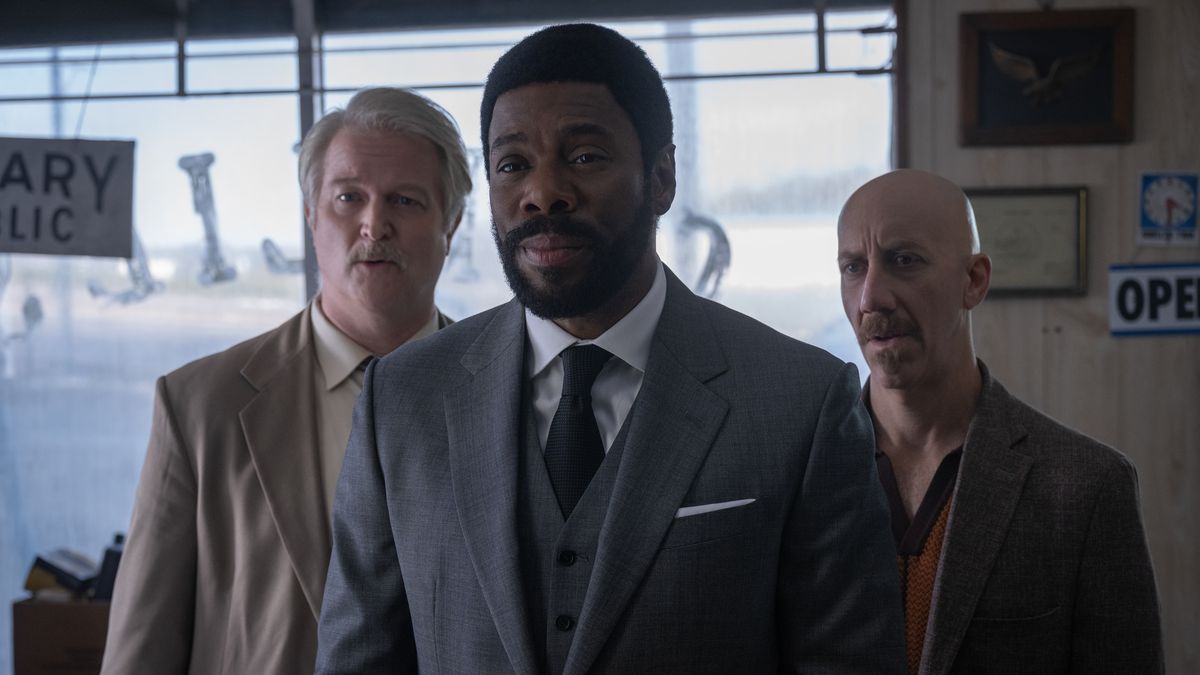
Photo: Wilson Webb/Working Title/Focus Features
Yet this lack of substance nags at Drive-Away Dolls, because the film does intersect with the political reality of its era, rooting its antagonists in turn-of-the-century “family values” politics and how queer existence is labeled vulgar. In repeat viewings, it’s possible that this nagging reveals itself to be a void, as the thinness of its characters is just meant to facilitate gags, and the jokes don’t much build out its characters or the world they inhabit.
Coen and Cooke don’t seem all that bothered by that, though, having crafted a film where being outrageous, gay, and outrageously gay is statement enough. This is probably the filmmakers’ most cogent argument for Drive-Away Dolls, one made textual as the end credits begin to explode onto the screen preceded by the film’s original, less polite title: Drive-Away Dykes.
Drive-Away Dolls is in theaters now.
- SEO Powered Content & PR Distribution. Get Amplified Today.
- PlatoData.Network Vertical Generative Ai. Empower Yourself. Access Here.
- PlatoAiStream. Web3 Intelligence. Knowledge Amplified. Access Here.
- PlatoESG. Carbon, CleanTech, Energy, Environment, Solar, Waste Management. Access Here.
- PlatoHealth. Biotech and Clinical Trials Intelligence. Access Here.
- Source: https://www.polygon.com/reviews/24085159/drive-away-dolls-review-ethan-coen
- a
- About
- acclaimed
- actors
- after
- All
- almost
- along
- also
- among
- an
- and
- Another
- ARE
- arguably
- argument
- as
- At
- attention
- audience
- auto
- away
- bar
- bars
- BE
- beats
- because
- begin
- behind
- being
- beloved
- between
- Bill
- Bit
- both
- breadth
- broad
- build
- but
- by
- Camp
- car
- care
- Cargo
- carrying
- cartoon
- case
- characters
- chief
- clear
- close
- cocktail
- collaborations
- Comedy
- comes
- community
- connect
- connection
- Control
- could
- counter
- crafted
- Crash
- Credits
- Crime
- dance
- decades
- deep
- deeper
- delightful
- describes
- describing
- Design
- discover
- Drink
- dynamic
- easily
- else
- embrace
- end
- Endlessly
- enough
- era
- ethan
- even
- excess
- existence
- expecting
- facilitate
- familiar
- Feature
- feel
- feels
- few
- Film
- films
- Final
- First
- first time
- flavor
- florida
- follows
- For
- form
- found
- frequent
- friend
- Friends
- from
- Fuel
- full
- fully
- fun
- funny
- Gaming
- Gender
- go
- good
- grand
- hands
- happier
- Hard
- Have
- having
- help
- her
- heroes
- his
- Hook
- How
- however
- HTTPS
- idea
- if
- important
- in
- inner
- instead
- intent
- interactions
- intersect
- into
- Is
- IT
- ITS
- itself
- joel
- jpg
- just
- kind
- known
- knows
- lack
- lady
- last
- less
- let
- Lighting
- like
- Live
- Look
- looks
- lost
- love
- made
- make
- MAKES
- many
- maybe
- meant
- meet
- might
- missing
- more
- most
- mostly
- movie
- much
- named
- narrative
- no
- not
- now
- numbers
- of
- on
- One
- only
- onto
- open
- opportunities
- or
- original
- out
- overwhelming
- pair
- particular
- particularly
- Party
- passion
- People
- period
- philadelphia
- places
- plato
- plato data intelligence
- platodata
- platogaming
- plausible
- play
- played
- plot
- political
- politics
- pop
- possible
- present
- probably
- Production
- project
- Reality
- realize
- reason
- reckless
- relentless
- Repeat
- reveals
- rich
- road
- roles
- running
- runs
- scene
- Screen
- script
- seem
- serving
- set
- setting
- Sex
- she
- smartphones
- Solo
- some
- someone
- something
- Space
- stand
- start
- Statement
- stop
- stopping
- Stories
- straight
- strong
- style
- substance
- sure
- taken
- textual
- than
- that
- The
- the world
- their
- there
- they
- think
- this
- those
- though
- three
- thrilling
- Through
- time
- Title
- to
- together
- transitions
- tremendous
- trip
- trying
- two
- until
- up
- use
- various
- very
- viewer
- visuals
- Vulgar
- wants
- watching
- way
- ways
- welcome
- where
- while
- whole
- wide
- wife
- willing
- Wilson
- with
- Work
- world
- would
- year
- years
- you
- yourself
- Youth
- zephyrnet
